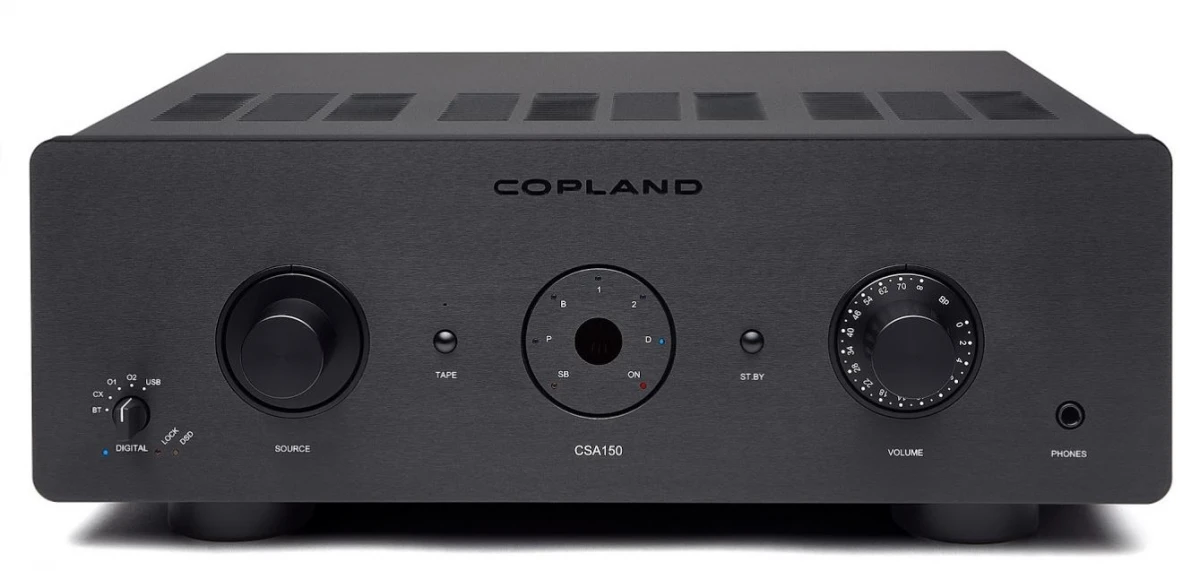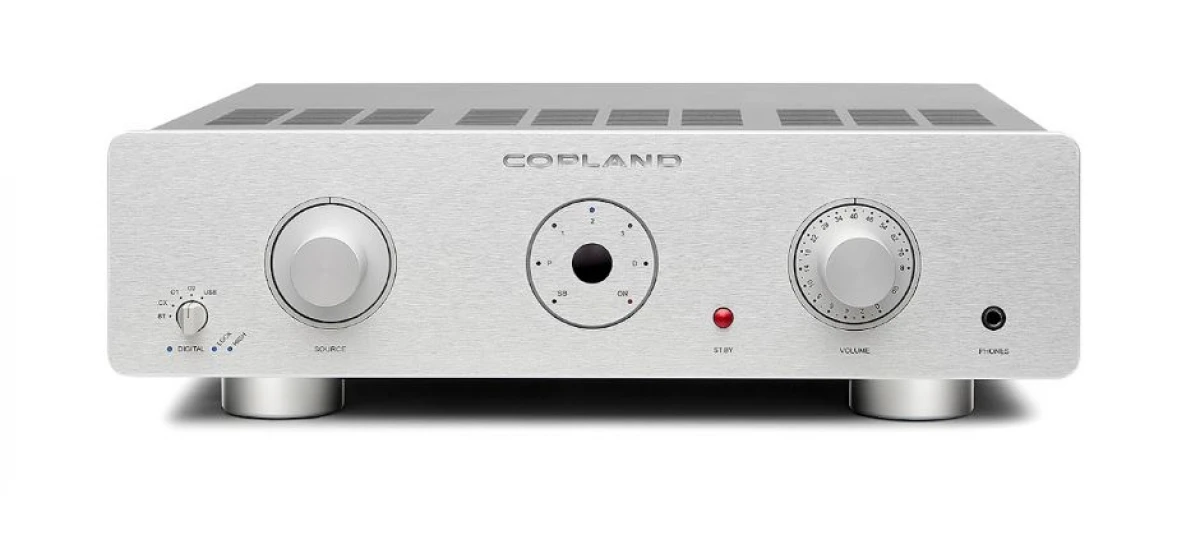Integrated amplifiers — Copland CSA100
Description, images, technical data and specifications
Copland CSA100
Image source — © Copland
The 6922 lamp works in the preamp section, and MOSFET transistors matched in pairs work at the output. The device outputs 100 watts per channel to an 8 ohm load, and the power increases to 180 watts when the resistance drops to 4 ohms. The DAC section is built on an ES9018 Sabre chip with support for 32-bit/384 kHz streams and DSD128 when connected to a USB-B port.


Specifications
Model name
CSA100
Type
Integrated Amplifier with DAC and Phono
Analog inputs (balanced)
3
Analog inputs (single-ended)
1
Input sensitivity (mV)
250
Input impedance (balanced) (Ω)
50 000
Input impedance (single-ended) (Ω)
50 000
Output impedance (balanced) (Ω)
N/A
Output impedance (single-ended) (Ω)
N/A
D/A conversion
Yes
Phono MM/MC current-sensing input impedance (Ω)
47 000
Output power (8Ω) (W)
100
Output power (4Ω) (W)
180
Gain (dBu)
N/A
Frequency response low +/- 3dB (Hz)
10
Frequency response high +/- 3dB (Hz)
150 000
Signal to Noise Ratio (dB)
90
Total Harmonic Distortion + Noise (%)
0.06
Damping factor
N/A
Dimensions (mm)
435 x 135 x 370
Weight (kg)
14
Official link
More components

Integrated amplifiers
Copland CTA407

Integrated amplifiers
Copland CSA150

Integrated amplifiers
Copland CSA70


